Best telehealth videoconferencing solutions
The COVID-19 pandemic catalyzed demand for telehealth videoconferencing. Experts believe the telehealth market will increase from $7.3 million in 2020 to more than $60 billion by the end of the decade, showing tremendous growth in both usage and the number of providers to choose from.
Beyond connecting patients with their healthcare providers, some professionals now use the technology to confer with other medical professionals about patients and discuss treatment plans.
Healthcare organizations have a major opportunity to implement this technology in their practices — the only issue is figuring out which solution works best for them.
Telehealth videoconferencing basics
Telehealth videoconferencing is an innovative digital form of healthcare delivery that allows patients to meet with providers over video, phone, or text-based chat. These tools enable easy access to annual checkups, prescription refills, and even mental health care.
Telehealth is now incredibly popular. To make the experience as effective as possible, providers need to find a tool that lets them easily connect with patients. Let’s explore the options to see which works best for your healthcare organization.
Top 10 telehealth videoconferencing solutions
1. SimplePractice
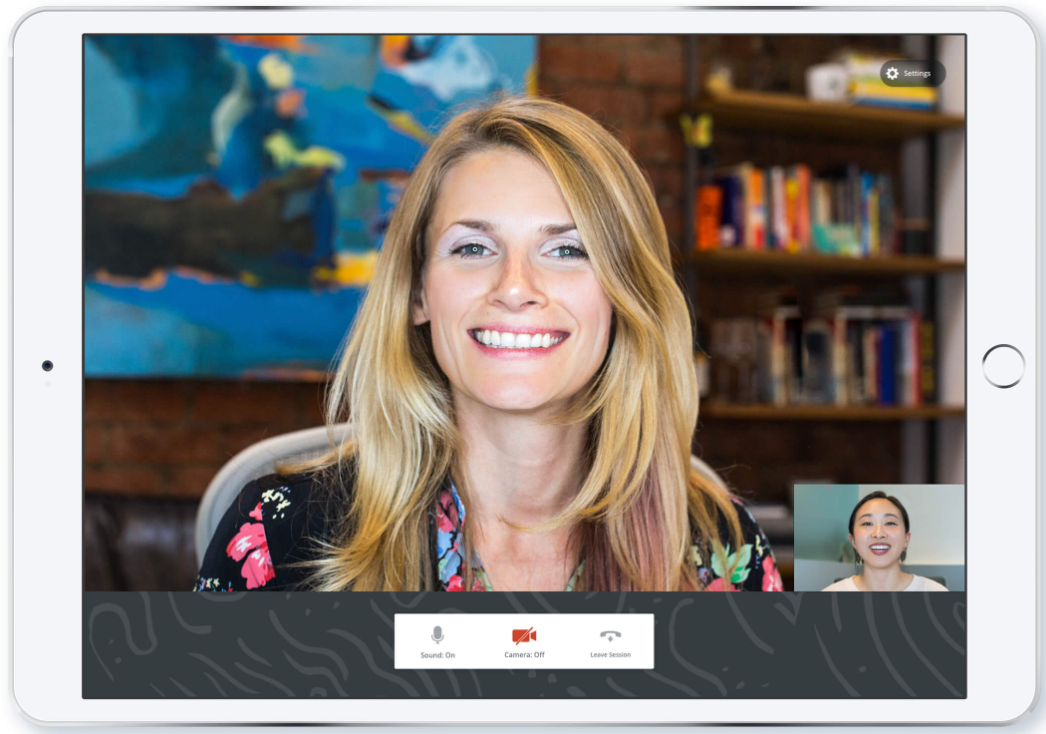
SimplePractice is an integrated management solution that allows you to initiate video calls, schedule telehealth appointments directly from the calendar, build a website, bill patients, and more.
Key features:
- Ensures “bank-level encryption” of data — both at rest and in transit
- Allows healthcare providers to share videos and documents from their screens
Pricing:
- Trial: Free 30-day limited trial of the Plus plan
- Starter: $29/month for unlimited clients, live customer support, mobile app, etc.
- Essential: $69/month for everything in Starter, plus additional features like customizable notes, appointment reminders, and an analytics dashboard
- Plus: $99/month for everything in Essential, plus the ability to add team members, practice managers (for $39/month each) or clinicians (for $59/month each), and more
2. doxy.me
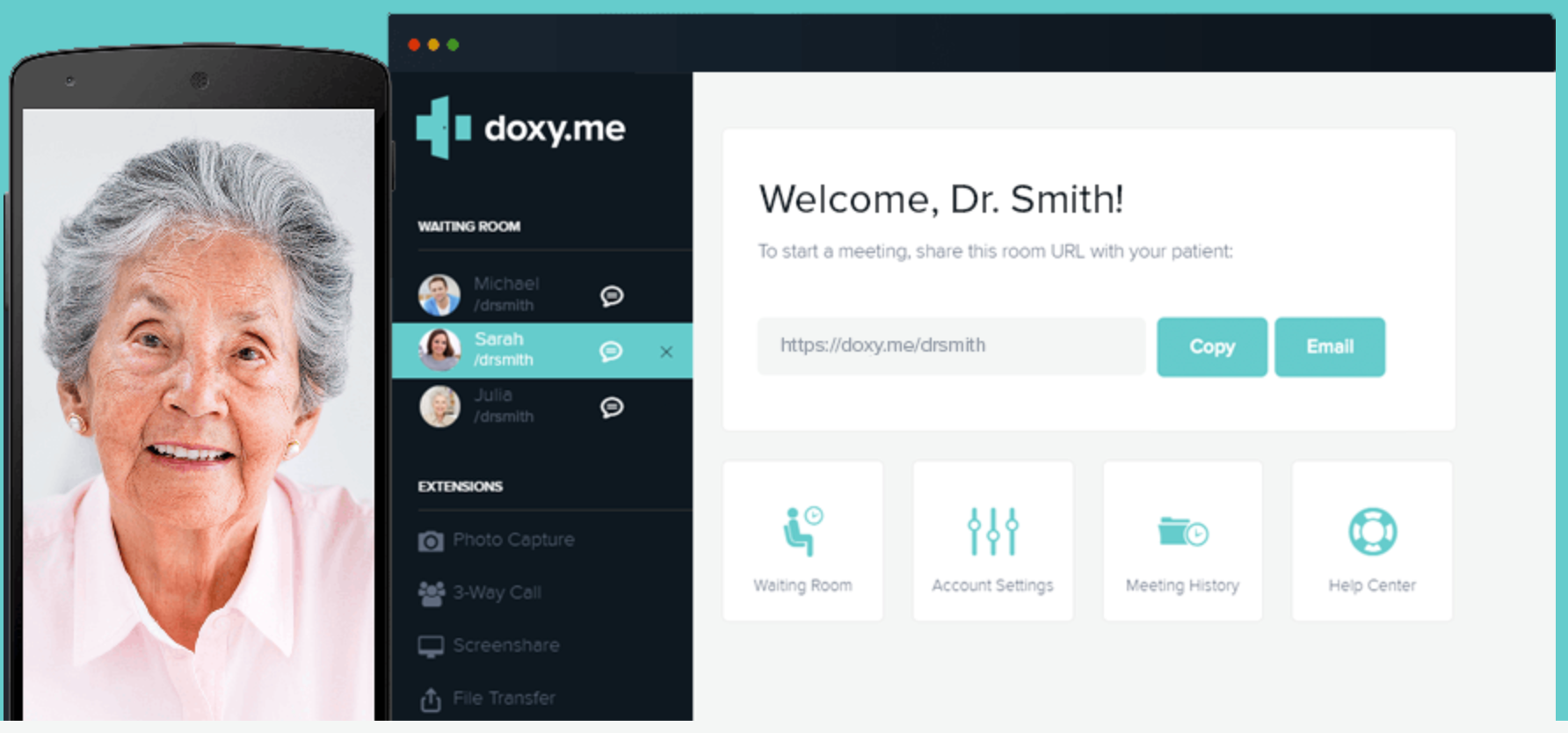
This easy-to-use service is entirely browser-based. You can also access doxy.me on your mobile browser — there’s no need to download an app.
Key features:
- Allows providers to set up virtual waiting rooms and keep a meeting history of past visits
- Uses security and encryption protocols to enable HIPAA and the Health Information Technology for Economic and Clinical Health (HITECH) Act
Pricing:
- Free: Basic plan with unlimited call minutes, HIPAA compliance, and more
- Pro: $35/month for everything in the Free plan, plus HD video, group calls, and more
- Clinic: $50/month for everything in the Pro plan, plus more features, such as custom branding and administrative controls
- Enterprise: Custom pricing for everything in the Clinic plan for an unlimited number of users, a dedicated success specialist, and more
3. VSee

VSee is a standalone solution that works over rural 3G networks, making it ideal for healthcare providers who treat patients in remote areas.
Key features:
- Allows you to set up virtual waiting rooms, conduct patient intake, and alert providers when a patient is waiting
- Connects health trackers or other wearables to VSee, allowing providers to monitor patients remotely
Pricing:
- Free: Unlimited one-on-one video calls
- Plus: $29/month, including unlimited group video calls and SMS and email reminders
- Premium: $49/month for custom branding, the ability to accept credit card payments, shared scheduling, and more
- Enterprise: Customized pricing for a branded mobile app, single-sign on, and more
4. Zoom for Healthcare

Zoom for Healthcare brings the ubiquity of Zoom to the healthcare space to provide easy patient access.
Key features:
- Zoom Rooms for group chats, primary care delivery, and more
- Third-party integrations to add more functionality to your telehealth program
Pricing:
- Zoom Pro: $159.90/user/year for hosting up to 100 participants, conferencing up to 30 hours, etc.
- Zoom Business, Business Plus & Enterprise: Custom pricing, hosting up to 1000 participants, language interpretation, 10GB cloud storage for recording, etc.
5. GoToMeeting

GoToMeeting can help you provide HIPAA-friendly desktop, mobile, and phone conferencing.
Key features:
- Security highlights such as one-time passwords and encrypted sessions
- Integrations with apps like scheduling and chat tools
Pricing:
- Professional: $10.75/organizer/month for up to 150 participants, webinar option for an additional $20/month
- Business: $14.33/organizer/month for up to 250 participants, webinar option for an additional $20/month
- Enterprise: Custom pricing for larger groups, extra features, and specialty bundling deals
6. Teladoc Health

Teladoc Health is a comprehensive telehealth option that covers primary, mental health, chronic condition, and specialty care and connects patients with new primary care providers (PCPs).
Key features:
- Allows for personalized patient/provider recommendations based on data analysis of socioeconomic factors, health background, and other contributing factors
- Connects patients to in-person care options as needed
Pricing:
- Custom: Pricing is based on each organization with no preset payment structure.
7. MDLIVE

MDLIVE covers 24-7 virtual clinics for non-emergency medical and mental health symptoms.
Key features:
- Rapid access to virtual care specialists within 15 minutes of patient requests
- Easy setup on desktop, mobile, and phone with minimal technical assistance required
Pricing:
- Custom: Pricing is based per organization and per features selected and implemented by the provider.
8. TheraNest

TheraNest is a mental health tool that combines telehealth with managed billing for psychologists, psychiatrists, social workers, and more.
Key features:
- Integration with Wiley Practice Planners for simple, detailed note-taking and in-app note storage
- Integrated billing and scheduling features to handle all logistical elements in one dashboard
Pricing: (All features are accessible at each pricing tier.)
- Up to 30 clients: $39/month
- Up to 40 clients: $50/month
- Up to 50 clients: $60/month
- Up to 80 clients: $91/month
- Up to 100 clients: Custom pricing
9. Mend

Mend delivers comprehensive patient care and telehealth software with built-in automation and AI features.
Key features:
- Attendance Predictor to help reduce no-shows
- Automated patient payments for faster, immediate billing
Pricing:
- Mend SCA: Pricing starts at $18.000 per year, for 25 developers. It offers automated detection, malicious open-source packages, etc.
- Mend SAST: Pricing starts at $18.000 per year, for 25 developers. It offers remediation for custom code, prioritization, etc.
- Mend Container: Pricing starts at $25.000 per year. It offers secrets detection, runtime analysis information, etc.
- Mend Renovate: Pricing starts at $25.000 per year, for 100 developers. This tier delivers advanced automation features, dedicated support, smart merge control, etc.
10. Direct Health (formerly known as Medici)

Direct Health (formerly known as Medici) is a mobile app telehealth option that provides quick but limited connection to patients largely via text communication.
Key features:
- Secure text, call, and video options, including seamless chat features built for mobile
- Simple e-referral program to quickly direct patients to speciality care, all within the app
Pricing:
- Free tier is available.
Ultimately, the best telehealth videoconferencing service for your practice will depend on the features you need and the user-friendliness of the platform. Evaluate your options and remember that the best solution for your practice won’t necessarily be the same as a colleague’s. With the right solution, you’ll be able to thrive in the telehealth era.





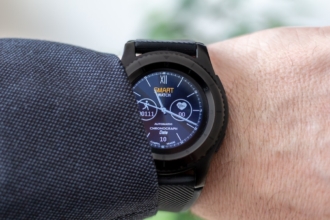







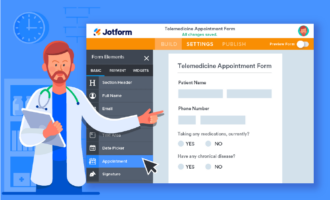























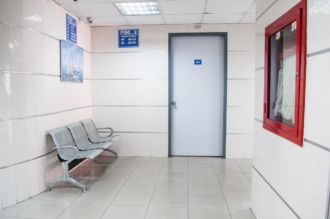










Send Comment: